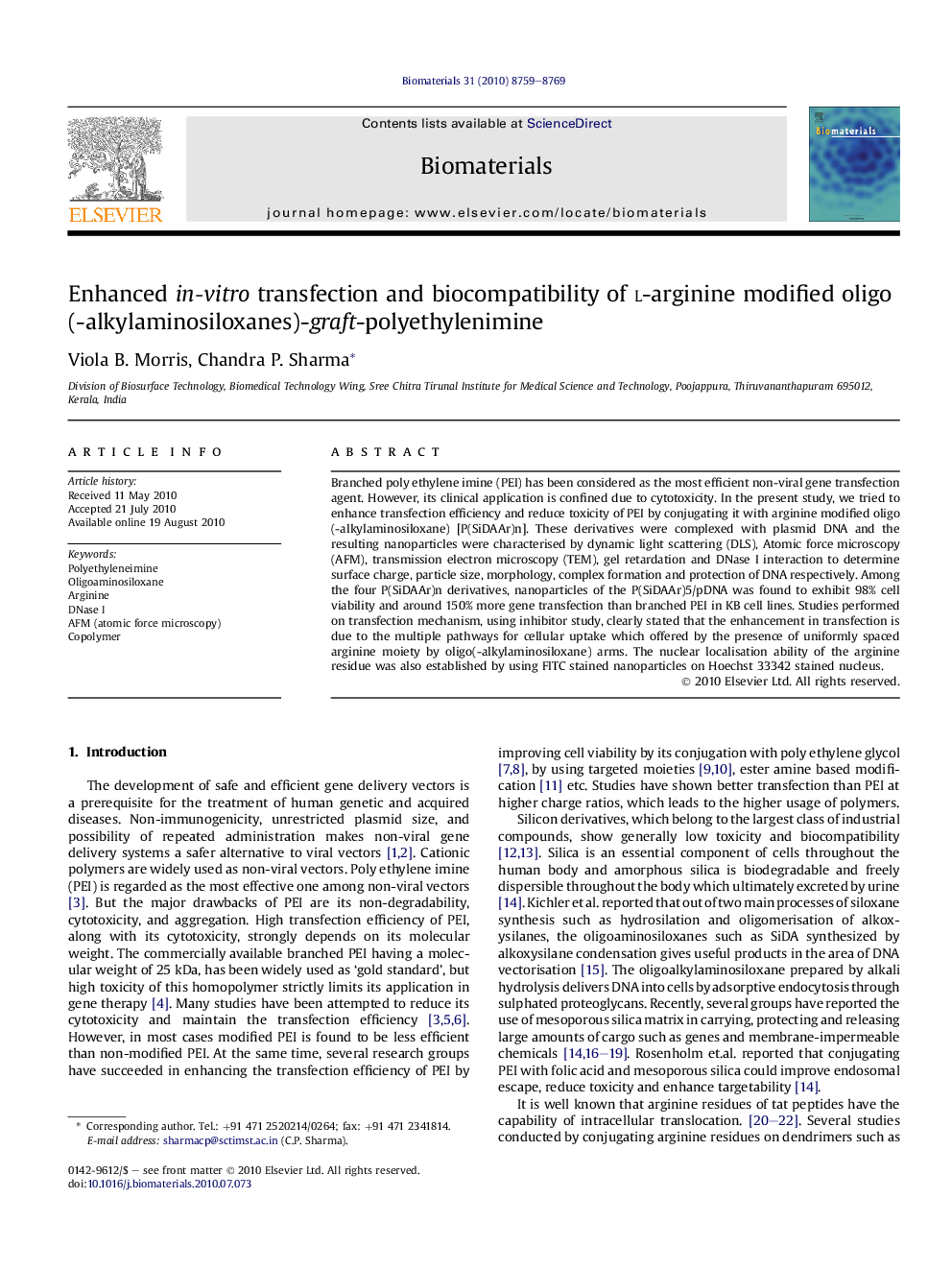| Article ID | Journal | Published Year | Pages | File Type |
|---|---|---|---|---|
| 8861 | Biomaterials | 2010 | 11 Pages |
Branched poly ethylene imine (PEI) has been considered as the most efficient non-viral gene transfection agent. However, its clinical application is confined due to cytotoxicity. In the present study, we tried to enhance transfection efficiency and reduce toxicity of PEI by conjugating it with arginine modified oligo(-alkylaminosiloxane) [P(SiDAAr)n]. These derivatives were complexed with plasmid DNA and the resulting nanoparticles were characterised by dynamic light scattering (DLS), Atomic force microscopy (AFM), transmission electron microscopy (TEM), gel retardation and DNase I interaction to determine surface charge, particle size, morphology, complex formation and protection of DNA respectively. Among the four P(SiDAAr)n derivatives, nanoparticles of the P(SiDAAr)5/pDNA was found to exhibit 98% cell viability and around 150% more gene transfection than branched PEI in KB cell lines. Studies performed on transfection mechanism, using inhibitor study, clearly stated that the enhancement in transfection is due to the multiple pathways for cellular uptake which offered by the presence of uniformly spaced arginine moiety by oligo(-alkylaminosiloxane) arms. The nuclear localisation ability of the arginine residue was also established by using FITC stained nanoparticles on Hoechst 33342 stained nucleus.
